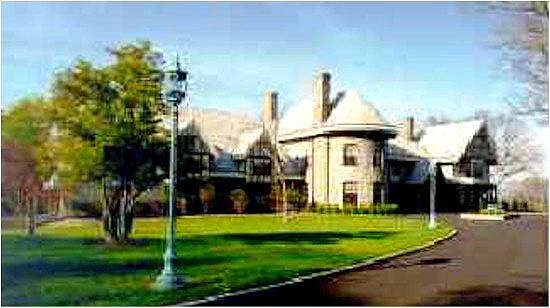Spectrum
Three Views of the Same BookDue to budget cuts the light at the end of the tunnel has been turned off.
Reviews of the book Nickel and Dimed: On (Not) Getting by in America by Barbara Ehrenreich Making Ends Meetby Dorothy Gallagher Barbara Ehrenreich travels across America to learn how people live on a minimum wage. In the good times of 1998, with the clock on welfare benefits running out, Barbara Ehrenreich had a question: How, she wondered, would the four million women (most with children) soon to be pushed off the rolls and into the labour market make their way on wages of $6 or $7 an hour - an amount that it was universally agreed was not a living wage? Ehrenreich, who has a dozen books behind her dealing with the social and political hallmarks of our economic system, has here, with Nickel and Dimed, followed in an honoured journalistic tradition and written a valuable and illuminating book. Presenting herself as an unskilled worker, a homemaker needing to earn a living after divorce, she entered the low end of the labour market and spent one month in each of three different sections of the country. She looked for the best-paying unskilled job she could get, and hoped to earn enough money at it to pay her rent for a second month. "So," she writes, "this is not a story of some death-defying 'undercover' adventure. Almost anyone could do what I did - look for jobs, work those jobs, try to make ends meet. In fact, millions of Americans do it every day, and with a lot less fanfare and dithering."
"There are no secret economies that nourish the poor," Ehrenreich writes. "On the contrary there are a host of special costs. If you can't put up the two months' rent you need to secure an apartment, you end up paying through the nose for a room by the week. If you have only a room, with a hot plate at best, you can't save by cooking up huge lentil stews that can be frozen for the week ahead. You eat fast food or the hot dogs and styrofoam cups of soup that can be microwaved at a convenience store." Without health insurance you risk a small cut becoming infected because you can afford neither a visit to the doctor nor antibiotics.
So much for waitressing in Florida. On to Maine and scrubbing floors. Despite plentiful ads for jobs, Portland turned out to be "just another $6-$7-an-hour town." Ehrenreich again took two jobs to make ends meet - a weekend job in the Alzheimer's ward of a nursing home and a full-time job with a house-cleaning service.
Minneapolis is Ehrenreich's last stop. In this city, as in the other two, finding affordable housing was a major problem. Across the nation the supply of apartments for low-income families is decreasing: 36 units available for every 100 families in need. Like many of the poor, Ehrenreich is reduced to an overpriced motel, more like a flophouse in terms of cleanliness and safety. Borderline homelessness is how she describes it. The old rule that one should pay no more than 30% of income for rent has become inoperative; for most poor renters, the figure is now more than 50%.
In this way 3 months went by, and Ehrenreich's investigation was finished. What does she conclude? No surprises here. Even for a worker holding two jobs, wages are too low, housing costs too high for minimally decent survival. "In the rhetorical buildup to welfare reform, it was uniformly assumed that a job was the ticket out of poverty and that the only thing holding back welfare recipients was their reluctance to get out and get one." But if a living wage for one adult and two children is, according to the Economic Policy Institute, $30,000 a year, a total calculated to include no luxuries unless health insurance and licensed child care are considered luxuries, this amount will never be provided by the private sector to entry-level workers. "Most civilised nations," Ehrenreich writes, "compensate for the inadequacy of wages by providing relatively generous public services such as health insurance, free or subsidised child care, subsidised housing and effective public transportation." So what should we think about the fact that in America we are sending the poor out to make it on their own on little more than a quarter of a living wage? Shame, Ehrenreich suggests, might be an appropriate response. Ehrenreich's picture of the working poor was taken during the best of times. Yet the comforting economic clichés offered by our pundits failed even under those boom conditions: a rising tide does not lift all boats; trickledown economics stops just south of the middle class. So much for tall theories. Now we have entered a downward slide, with all economic indicators pointing to the toilet. We have Barbara Ehrenreich to thank for bringing us the news of America's working poor so clearly and directly, and conveying with it a deep moral outrage and a finely textured sense of lives as lived. As Michael Harrington was, she is now our premier reporter of the underside of capitalism. Dorothy Gallagher's most recent book is How I Came into My Inheritance and Other True Stories Source: The New York Times Book Review Sunday May 13 2001
Living Smallby Susan Wieler Food is cheap in America, and decent clothing can be had for a reasonable price, but housing will kill you every time. Basic accommodations with kitchen facilities are simply out of reach for millions of women trying to support their families. We've all been told to be careful what we wish for. J ournalism, as Barbara Ehrenreich recently learned, should be careful what they suggest to editors. At lunch with Harper's magazine editor Lewis Lapham, she mused that "someone" should do a piece of old-fashioned immersion journalism: Try to make it on the $6-$7 an hour that single mothers were likely to earn as they moved into the labour market in the wake of welfare reform. Of course, she ended up being that someone; Nickel and Dimed: On (Not) Getting By in America is the result. The experiment was simple: Ehrenreich would present herself as a newly divorced woman re-entering the workforce after years at home. (One wonders why she did not claim to be coming off public assistance, to test for bias against welfare moms.) She would take the highest-paying job and cheapest accommodations she could find and see if she could earn enough money to pay the second month's rent. She failed three times - in Key West, Minneapolis and Portland, Maine - primarily because there is almost no housing for low-wage workers in America. Ehrenreich's significant advantages over the typical welfare mother make her inability to make ends meet particularly disturbing. Perhaps most important, she did not have small children in tow. This eliminated the child care crises, scheduling conflicts and many of the financial burdens that plague single mothers. She also allowed herself a reliable car and money for start-up costs, most significantly the two months' deposit required to rent an apartment. In Key West, this seed money allows her to rent a $500-a-month efficiency 30 miles from her job at a family restaurant. Anything closer is beyond her means. Her co-workers, who lack the capital for cars and security deposits, live in flophouses, motels, vans and, in one case, a dry-docked boat. As Ehrenreich writes, "In poverty, as in certain propositions in physics, starting conditions are everything." But when the Florida tourist season ends and tips plummet, she moves into trailer number 46 in the Overseas Trailer Park ($625 a month) to save on gas money and free up time to look for the second job she will need to make the rent. She gamely takes on a second fulltime waitressing job, but is forced to admit that despite years of aerobics and weightIifting, she cannot work back-to-back shifts on a daily basis. In Portland, she comes closest to matching income to expenses. Working 7 days a week - 5 as a maid ($6.65 an hour), and 2 in a nursing home ($7 an hour) - Ehrenreich keeps her rent down to a manageable 40% of expenses. Unfortunately, that rent will triple when the tourist season begins. In Minneapolis, the best she can do is the Clearview Inn, a "residential motel" with a weekly rate of $255. No air conditioning, no fans, no screens, no bolt on the door. Heavy on the mould and mouse droppings. On day two, the sewage backs up into her living/bedroom. This is tough duty even for a leftist social critic with a strong constitution, and Ehrenreich chronicles evidence that the experiment is starting to wear. Despite her obvious empathy and commitment to understanding the realities of daily life in low-wage America, she starts to register a discordant snobbishness. Surveying the clothes at Wal-Mart, she denigrates the "Russ and Bobbie Brooks lines, seemingly aimed at pudgy fourth-grade teachers with important barbecues to attend." She weighs the "entertainment possibilities" of eating out at a buffet, where she "can watch the large Mexican families or the even larger, in total body mass terms, families of Minnesota Anglos." But perhaps these cruelties can be excused in one about to become homeless (sort of). The rent at the Clearview, more than $1,000 a month, is wildly beyond her means as a $7-an-hour sales clerk at Wal-Mart. In fact, the rent exceeds her take-home pay. She can afford $400 a month, maybe $500 if she can subsist entirely on beans and lentils. Of course, you need a kitchen to cook the legumes, and this luxury does not exist in her price range. The YMCA refers her to a place with dorm beds for $19 a night, which sounds cheap until you realise it's out of her price range at $570 a month. When she goes to a social service agency for help, they suggest she move into a homeless shelter until she can save the money for the deposit on an apartment. Food is cheap in America, and decent clothing can be had for a reasonable price at Wal-Mart and consignment shops - but housing will kill you every time. Basic accommodations with kitchen facilities are simply out of reach for millions of women trying to support their families by the sweat of their brow. So how much do a mother and two kids need to survive in America? According to numerous studies by the Economic Policy Institute and others, about $30,000 a year. This works out to about $14 an hour, which is twice what most low-wage workers earn even in the best of times. Ehrenreich supports an increase in the minimum wage, which currently stands irrelevantly at $5.15, but acknowledges that a $14 hourly wage cannot be legislated into existence. Instead, she exhorts the United States to follow the example of more civilised nations, who make up the shortfall with subsidised housing and other public services. America has decided that long-term welfare dependency is no longer a life option for America's poor single mothers. Now we must decide if it is acceptable for these same women to live in poverty when they are working full time at physically demanding jobs. In the meantime, millions of low-wage workers will continue their struggle to feed, clothe and house themselves and their children. Susan Wieler of Madison is a writer and economist. Source: The Sunday Star-Ledger (Morris County New Jersey edition) 3 June 2001
A Poor Excuse for Compassionby J Peder Zane Remember when impassioned muckrakers such as Jack London and George Orwell cast comfort aside and lived among the working classes to craft conscience-pricking exposes about the plight of the poor? I don't. And neither does anyone else, considering the success of Barbara Ehrenreich's book Nickel and Dimed: On (Not) Getting By in America. This dismal book, which chronicles a social critic's toe-dipping forays into the world of low-wage work, has become a national best seller while garnering admiring reviews. Liberal standard-bearers including Studs Terkel, Molly Ivins and the Nation magazine have offered particularly fulsome praise. The response is as shocking as it is revealing of a certain strain of liberal thought. London (People of the Abyss, 1902) and Orwell (Down and Out in Paris and London, 1933) were fueled by courage, compassion and commitment. Ehrenreich seems driven by contempt - for the facts she uncovers, the hardworking people she is supposedly lionising and for just about everyone else she encounters. Intended to bring us closer to the difficulties faced by the working poor, what Ehrenreich's 12th book really does is expose the yawning divide separating poor people from many of the progressives who deign to speak for them. Nickel and Dimed is disappointing because its premise is so promising. The great prosperity America has enjoyed since the Reagan years and the nation's simultaneous move to the right has, indeed, made specters of the nation's poor. They have fallen off the radar of a culture obsessed with success. So, on the heels of President Clinton's welfare reform efforts, Ehrenreich set out to remind us of these invisible Americans. Specifically, she wanted to see whether anybody could actually make it in America on $7 or $8 an hour. Between 1998 and 2000 she took a variety of low-paying jobs in three states: she worked as a waitress in Florida, as a rent-a-maid and a nursing home aide in Maine, and as a Wal-Mart clerk in Minnesota. Such "immersion journalism" succeeds when the reporter surrenders to her subject. Ehrenreich, evidently, couldn't be bothered. She spent little more than a month in each location. This is tantamount to visiting Paris, Rome and Madrid and then passing yourself off as an expert on Europe. Ehrenreich's "traipsing journalism" dooms her project. It makes her own failed efforts to make ends meet unilluminating while preventing her from entering the lives of her co-workers. Her reporting is so thin that we never learn about the working poor's long-term survival strategies, the networks of family members and social agencies they rely on, the ingenious coping mechanisms they have devised. Her lack of curiosity about them is staggering. None are rendered as complex human beings. They are merely props in her immorality play. Ehrenreich may be unwilling to live among or communicate with the poor, but she is eager to be their champion. Less a reporter than an ideologue, her brief sojourns become an excuse for railing against corporate America. She describes the modern workplace as a "dictatorship" and a "POW camp." She is particularly enraged by mechanisms employers use to control their workers - from the administration of pre-employment drug and personality tests, to the rigid use of time clocks and the insistence that employees stay busy. "When you enter the low-wage workplace ... you check your civil liberties at the door." The circumstances she describes sound troubling. However, she never tries to reconcile her employers' posture with the conduct of some of her co-workers. Most of her colleagues seem diligent. But in her brief stints she encountered a co-worker who came to work drunk, a thieving dishwasher and a manager who raided the cash register to buy crack. Ehrenreich quit one job by walking away in the middle of a shift and another by simply failing to show up. It is impossible to draw larger lessons from these anecdotes, but they do suggest why some employers feel the need to corral their staff. The most interesting sections of the book reveal her co-workers' lack of class consciousness. Most cling to the notion of a day's work for a day's pay. They do not resent the success of others. "It motivates me," a fellow maid explains. "It's my goal to get where they are." Rather than explore this mindset, Ehrenreich dismisses it as the expression of deluded chumps. Her book is also marred by gross generalisations that border on bigotry. She tells us "visible Christians" are the worst tippers. She describes the owner of the rent-a-maid outfit she works for - whom the other employees seem to like - as a "pimp." Working at Wal-Mart, she says, "I even start hating the customers for extraneous reasons, such as, in the case of native Caucasians, their size. I don't mean just their bellies and butts, but huge bulges in completely exotic locations, like the backs of the necks and the knees." Nickel and Dimed is, ultimately, a betrayal of the people and ideals it pretends to champion. Liberalism's power stems not so much from the sensible political positions Ehrenreich espouses - increased unionisation and a higher minimum wage - but from a liberal spirit toward our fellow citizens. Righteous anger is most useful when it is a tool of compassion. You don't have to be of the people to be for people, but you must care about them as people. In Nickel and Dimed Barbara Ehrenreich seems more attracted to the idea of the working poor than their reality. Book review editor J Peder Zane can be reached at pzane@newsobserver.com
A Look at the Other Side: The Burden of WealthMoney Is Not the End of Worry.It Is the Beginning.Face it. You worked your whole life to feel comfortable, and here you are feeling decidedly otherwise. You have more dependents, more possessions, more investments, more taxes, more responsibilities, and more to lose. Yet you're expected to fight your way through a zillion emails and voice mails each day, just trying to hang on to your sanity, your ideal weight and your quality time with your family.
The burden of wealth is something few understand unless it actually rests on their shoulders. How can you explain to other people the fear that your children might never need to work? Or the incredible pressure of trying to protect a lifetime's worth of missed weekends and vacations? And then, of course, who would believe all that money could be anything other than a blessing? We would. And it's not a claim we make lightly. For nearly 150 years, U.S. Trust has been saying "Welcome" to affluent individuals and families. We don't try to be all things to all people; we only deal with the wealthy. Which means our proprietary investment research and collective market acumen are entirely devoted to your specific needs rather than merely adapted to them. Our experts in financial and estate planning, investment management, and private banking create a unique plan for you that aims to preserve and enhance your hard-won achievements. So that instead of being reactive to the market, your future can rest on long-tem tax-intelligent strategies from a company that has seen more than a few ups and downs since 1853. Who knows, you might just start worrying a little less about your money and having fun with it a little more. After all, isn't that why you earned it in the first place? For more information, please call 1-500-USTRUST or visit our web site at www.ustrust.com.
Non-deposit investment products are not FDIC insured or bank guaranteed and are subject to investment risk, including possible loss of principal. (0301-13194) Member FDIC © 2001 US Trust Corporation Source: The New York Times Magazine 13 May 2001
U.S. Trust Agrees to Pay $10 Million FineInvestment firm US Trust has agreed to pay $10 million in fines to settle charges that its internal controls and record keeping were inadequate, the Federal Reserve and New York State Banking Department said Friday. U.S. Trust, which is owned by broker Charles Schwab, did not admit to any wrongdoing. Regulators said US Trust failed to comply with federal rules designed to prevent money laundering and to maintain accurate and complete records in its Strategic Trading Group. Source: USA Today Monday 16 July 2001
G R E E D ? Look at that house. Pretty nice, huh? You'd like to own something like that? Don't forget the reason you're working here. MONEY. It's not about doing a good job. That's what you do to keep making money. Cash. That's why you're here.
There are more rich people than ever before, including some 7 million millionaires and over 400 billionaires. In America, between 1979 and 1997 the average income of the richest 5th of the population jumped from 9 times the income of the poorest 5th to around 15 times. In 1999, British income inequality reached its widest level in 40 years.
Hyper-Rich Get Holidays for Life on Luxury LinerTrondheim, Norway - A new cruise liner delivered on Wednesday will offer the planet's richest people the chance to go on holiday for life in lavish, tightly-guarded homes costing up to $6.8 million. The white-hulled World, built for $266 million with 110 apartments and facilities including a casino, a sauna, a real grass golf putting green and a tennis court, was blessed in a ceremony in Trondheim, central Norway. Three priests sprinkled a mixture of champagne and water in the main lobby, after the ship's delivery from the construction yard in time for its maiden voyage to Oslo on 4 March. Clients will be able to buy apartments on the vessel, fitted out with luxuries like a jacuzzi on a private terrace from which to gaze at ports like Rio de Janeiro or Venice, rather than merely allowing rental of cabins for a few weeks' cruise. So far, 80 of 110 apartments have been sold to people including a London property dealer and a Norwegian shipping magnate. The Norwegian-based company behind the venture, ResidenSea, hopes to sell the remaining 30 within a year. Costs range from $2 million to $6.8 million for the biggest 300 square metre, 3-bedroom apartment. Extra charges per apartment range from $100,000 to $340,000 a year to pay for the 320 crew and other expenses on the 195-metre-long vessel. Many residents bought their apartments after merely viewing photos on the Internet. Even if they live on board, they will still be liable to tax in their home countries. ResidenSea declined to rate the value for money offered by living on the world's first ocean-going resort. "We're not selling it as an investment; this will be like a small village," ResidenSea Chief Executive Fredy Dellis told Reuters. "You buy a different way of living, you travel the world without leaving home. It's never been tried before." The first resident will embark on the 44,524 gross tonne World in Oslo on 6 March before travelling to Hamburg, London and Fort Lauderdale, Florida. Other destinations for 2002 include New York, the Azores, Barcelona, Venice, St Petersburg, Antigua, Acapulco and finally Hawaii for New Year. The vessel also offers 88 guest suites for short cruises. Dellis said the company stepped up security after the 11 September attacks on the United States, upgrading x-ray scanners and identity card checks for anyone coming on board. The vessel will be linked by satellite to a security firm in London. Five security staff include two Nepalese former Gurkha fighters. As a passenger ship, no weapons are allowed on board, even for security. Dellis said that some staff had half jokingly suggested installing anti-cruise missile defences. But captain Ola Harsheim said that the dangers of piracy or terrorism at sea were low. "It's much easier to walk off a crowded street into a big hotel in a major capital and plant a bomb," Harsheim told Reuters. "We're far down any list of targets." The average age of buyers, many of them entrepreneurs who will stay in touch with their businesses via satellite communications, is about 55. Forty percent are from the United States with the rest from Europe and elsewhere. Source: Reuters 20 February 2002
The Wealth EffectSIR - In your survey of the new rich (June 16th) you make an often overlooked point; personal wealth frequently brings with it problems that require careful handling if affluence is not to become a curse rather than a comfort. However, you omit an important recent finding from a Danish survey of almost 1,000 people who committed suicide. It found that if you suffered from mental illness, being wealthy significantly increased your risk of killing yourself. The authors suggest richer people with a psychiatric disorder might feel more stigmatised and ashamed about having a mental illness. However, as seeing a psychotherapist is more of an acceptable lifestyle choice for the wealthy rather than the poor, the finding is even more puzzling. Another possibility derives from the psychological theory that explanations most accessible to us to account for our predicaments are vital determinants of our morale. Not having money is an extremely convenient explanation for most of us about why we are not as content as we would like. But the wealthy are forced to conclude that their unhappiness might be more difficult to solve than merely pursuing the next pay rise. Perhaps the reason we stubbornly refuse to see that money is not the solution to all our problems is that this would deeply threaten the rationale underlying most of our busy lives. Paradoxically, it could be that economics is finally delivering us back to the ancient understanding that there is more to life than money. Dr Raj Persaud Source: "Letters" The Economist 21 July 2001
Lottery Winner's Grandchild Is Buriedby Jennifer Bundy Winfield, West Virginia - Seventeen-year-old Brandi Bragg was laid to rest yesterday, almost two years to the day after her doting grandfather. came into the great wealth that some say was Brandi's misfortune. The only granddaughter of Jack Whittaker, winner of the richest undivided lottery jackpot in US history, was found dead earlier this week of what may have been a drug overdose. Whittaker and others say her sudden access to vast wealth had brought new friends and dangerous habits. "Since she won the lottery she had too much money," said Becky Layton, who once took care of Brandi when she lived' with her grandparents. "I could point fingers all day long. The money is the root of it all, I would say." Brandi had her own apartment and several vehicles, including a Hummer and a Cadillac Escalade - indications of a teen with too much money, Layton said. "The very first few weeks after she won the lottery, they would get $10,000 out during the day. It was between all of them. Her mom would get out $5,000 and Brandi would only get out five more," Layton said. Brandi was a quiet 15-year-old with a big smile when her already-wealthy grandfather won a $314.9 million Powerball jackpot on Christmas Day" 2002. He took his winnings in a $113 million lump sum. Her 5 December death was the latest in a series of misfortunes that have befallen Whittaker's family since then. Among them: Whittaker's home and his vehicles have been hit with a rash of break-ins. He was arrested twice this year for drunken driving, and a judge ordered him to check into a rehab centre by 2 January. And in September, an 18-year-old friend of Brandi's, Jesse Tribble, was found dead in Whittaker's house from an overdose of cocaine, oxycodone and methadone. (Tribble once claimed that he had been hired by Whittaker to be Brandi's driver at $500 a day.) Brandi's body was discovered Monday, wrapped in a sheet and plastic tarp, alongside a junked van at the home of her boyfriend, Brandon Crosier, near the town of Scott Depot. State Police believe she died at the home, and her boyfriend put the body outside. "All I know is she OD'd and Brandon freaked out," Brandon's father, Steve Crosier, told reporters. No charges have been filed, Investigators said they are awaiting toxicology results and have yet to disclose the cause of death. But on Thursday, Whittaker said: "All of the problems I have had are because of my granddaughter's friends, her drug-using friends. I'm going to find them and put them in jail. It's not her fault, it's the people who sold drugs because they weren't taken off the street." While growing up, Brandi moved between her mother's home in Hinton, a former railroad community of 2,800, and Whittaker's home in Scott Depot. Her father died when she was young, and her mother at one point was treated for cancer. During yesterday's service in a Hinton funeral home, Brandi was remembered for the 17 things she loved, one for each year of her life. They included Whittaker, whom she called PawPaw, shopping, her cell phone, roses, and the rapper Nelly. In an interview with The Associated Press last year, Whittaker said he regretted the toll the jackpot was taking on his family. Brandi had lost most of her friends, he said. "They want her for her money and not for her good personality," he said. "She's the most bitter' 16-year-old I know." Source: The Star-Ledger Saturday 25 December 2004
Money doesn't buy clarity and awareness... You would think the death of Brandi's friend of a drug overdose in Whittaker's house would have been a clarion call but apparently it was not.
For articles related to working including why, which career, bosses, time constraints, focus, trends, gender issues, pay differentials, getting laid off, getting re-hired, dependents,
part-time work and balancing work and values click the "Up" button below to take you to the Index page for this section on Working. |
 Animals
Animals Animation
Animation Art of Playing Cards
Art of Playing Cards Drugs
Drugs Education
Education Environment
Environment Flying
Flying History
History Humour
Humour Immigration
Immigration Info/Tech
Info/Tech Intellectual/Entertaining
Intellectual/Entertaining Lifestyles
Lifestyles Men
Men Money/Politics/Law
Money/Politics/Law New Jersey
New Jersey Odds and Oddities
Odds and Oddities Older & Under
Older & Under Photography
Photography Prisons
Prisons Relationships
Relationships Science
Science Social/Cultural
Social/Cultural Terrorism
Terrorism Wellington
Wellington Working
Working Zero Return Investment
Zero Return Investment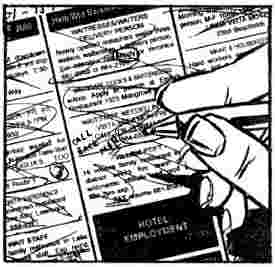 Ehrenreich's first stop was her hometown of Key West. She figured that with a $7-an-hour job, and a
place to rent costing no more than $500 a month, she would have $400 to $500 a month remaining to spend for food and gas. There were lots of want ads for service jobs in this resort
area. Ehrenreich filled out about 20 applications for jobs at supermarkets and hotels. No one called her. So her first revelation was that the vaunted abundance of ads is
not a reliable measure of available jobs but serves employers as an insurance policy against the high turnover in the low-wage work force.
Ehrenreich's first stop was her hometown of Key West. She figured that with a $7-an-hour job, and a
place to rent costing no more than $500 a month, she would have $400 to $500 a month remaining to spend for food and gas. There were lots of want ads for service jobs in this resort
area. Ehrenreich filled out about 20 applications for jobs at supermarkets and hotels. No one called her. So her first revelation was that the vaunted abundance of ads is
not a reliable measure of available jobs but serves employers as an insurance policy against the high turnover in the low-wage work force.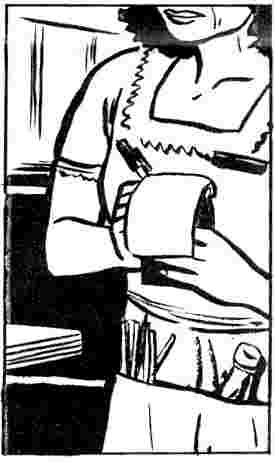 Ehrenreich finally got a job as a waitress at an inexpensive family restaurant. Her shift ran from
2pm to 10pm. Salary: $2.43 an hour plus tips. To find an affordable rent she had to move 30 miles out of town, a 45-minute commute on a crowded two-Iane highway. How did
her co-workers manage housing? One waitress shared a room in a $250-a-week flophouse; a cook shared a two-room apartment with three others; another worker lived in a van parked behind
a shopping centre.
Ehrenreich finally got a job as a waitress at an inexpensive family restaurant. Her shift ran from
2pm to 10pm. Salary: $2.43 an hour plus tips. To find an affordable rent she had to move 30 miles out of town, a 45-minute commute on a crowded two-Iane highway. How did
her co-workers manage housing? One waitress shared a room in a $250-a-week flophouse; a cook shared a two-room apartment with three others; another worker lived in a van parked behind
a shopping centre.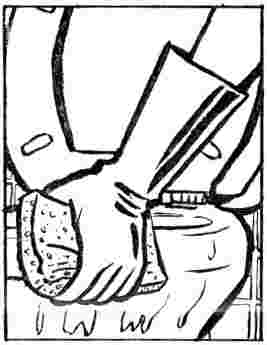 In the summer tourist slump, Ehrenreich found that her income - salary plus tips - dropped from about $7
an hour to $5.15. At that rate the only way to pay her rent was to get a second job. So for a while she worked an 8am-to-2pm shift at a second restaurant, then rushed to her regular
shift at the first - a 14-hour day of brutal physical work, as anyone who has waitressed for a living knows. With such a schedule she could not, of course, keep her decent housing so far
from town. Ehrenreich's new home was an 8-foot-wide trailer parked among others in "a nest of crime and crack" where "desolation rules night and day. ...There are not exactly people here
but what amounts to canned labour, being preserved between shifts from the heat."
In the summer tourist slump, Ehrenreich found that her income - salary plus tips - dropped from about $7
an hour to $5.15. At that rate the only way to pay her rent was to get a second job. So for a while she worked an 8am-to-2pm shift at a second restaurant, then rushed to her regular
shift at the first - a 14-hour day of brutal physical work, as anyone who has waitressed for a living knows. With such a schedule she could not, of course, keep her decent housing so far
from town. Ehrenreich's new home was an 8-foot-wide trailer parked among others in "a nest of crime and crack" where "desolation rules night and day. ...There are not exactly people here
but what amounts to canned labour, being preserved between shifts from the heat."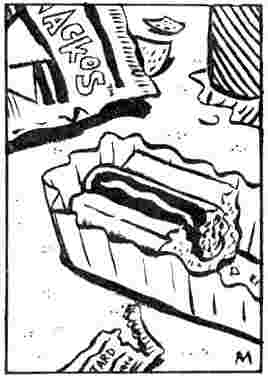 At the Merry Maids, the economics were as follows: the customer pays $25 an hour per cleaning person to
the service; the service pays $6.65 an hour to each cleaner. "How poor are they, my co-workers?" Ehrenreich asks. Half bags of corn chips for lunch; dizziness from
malnutrition; an impacted wisdom tooth requiring frantic calls to find a free dental clinic; worries about makeshift child-care arrangements because a licensed day care centre at $90 a
week is beyond any cleaner's budget; no actual homelessness, no one sleeping in a car, but everyone crowded into housing with far too many others, family and strangers: signs "of real
difficulty if not actual misery."
At the Merry Maids, the economics were as follows: the customer pays $25 an hour per cleaning person to
the service; the service pays $6.65 an hour to each cleaner. "How poor are they, my co-workers?" Ehrenreich asks. Half bags of corn chips for lunch; dizziness from
malnutrition; an impacted wisdom tooth requiring frantic calls to find a free dental clinic; worries about makeshift child-care arrangements because a licensed day care centre at $90 a
week is beyond any cleaner's budget; no actual homelessness, no one sleeping in a car, but everyone crowded into housing with far too many others, family and strangers: signs "of real
difficulty if not actual misery."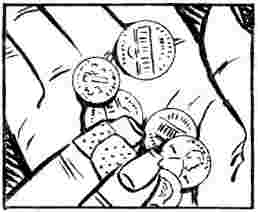 And soon, even with two jobs and no children to support, Ehrenreich starts having money
trouble. Housing is the killer. She foresees a weekend without food unless she can find charitable help. More than an hour on the phone with various charitable agencies
(cost of calls, $2.80) nets her a severely restricted food voucher - no fresh fruits or vegetables, chicken or cheese - worth $7.02.
And soon, even with two jobs and no children to support, Ehrenreich starts having money
trouble. Housing is the killer. She foresees a weekend without food unless she can find charitable help. More than an hour on the phone with various charitable agencies
(cost of calls, $2.80) nets her a severely restricted food voucher - no fresh fruits or vegetables, chicken or cheese - worth $7.02.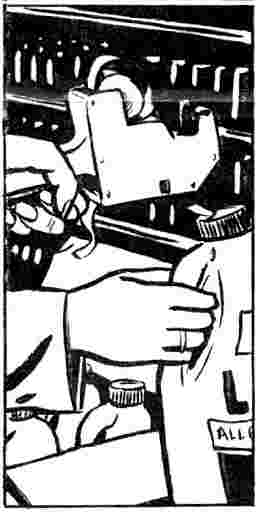 In the Minneapolis-St Paul area, where the "living wage" for a single parent and one child was calculated
to be $11.77 an hour, Ehrenreich has a job at Wal-Mart paying $7 an hour. Many of her fellow workers, even those with working spouses, hold two jobs.
In the Minneapolis-St Paul area, where the "living wage" for a single parent and one child was calculated
to be $11.77 an hour, Ehrenreich has a job at Wal-Mart paying $7 an hour. Many of her fellow workers, even those with working spouses, hold two jobs.